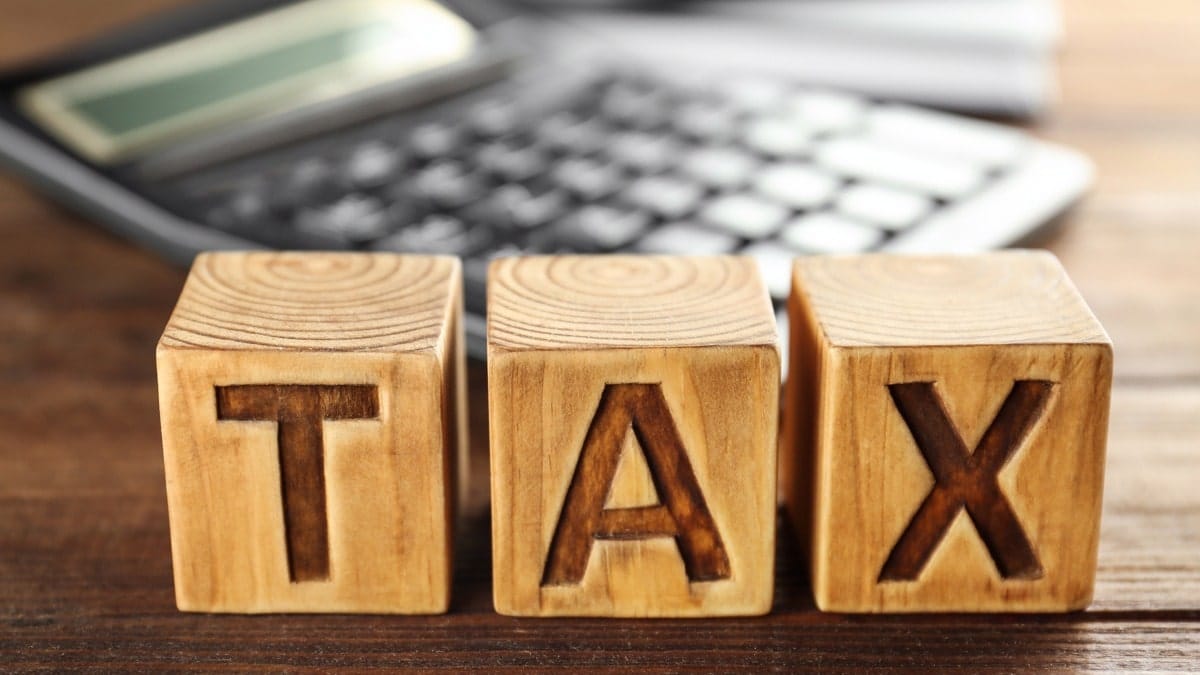In this guide
When you have your retirement benefits accumulating in a super fund, you pay the same rate of tax whether it’s an SMSF or a regular public offer fund.
But there are some important differences between the two types of super fund when it comes to how their tax liabilities can be managed.
To help you understand how SMSFs and large super funds deal with their tax liabilities, SuperGuide has put together a simple explainer of the key differences.
Note that this guide considers only taxed super funds, not the more uncommon untaxed funds relevant for certain government employees and constitutionally protected funds.
Large fund or SMSF: Which is best for tax?
Although the super system itself is a concessionally taxed environment in which to save for your retirement, many people are still keen to take advantage of any opportunity to cut their tax bill.
For tax purposes, super savings within an SMSF are treated the same way as if they were held by a large super fund, but SMSFs have more flexibility in how they can use the tax rules to achieve greater tax efficiency.
2026 SMSF calendar
Our free calendar includes due dates for important documents plus suggested dates for trustee meetings and other strategic issues for your SMSF.
"*" indicates required fields
SMSFs offer trustees opportunities for more control over the tax position of their fund because there are some tax strategies large super funds choose not to use. These are often impractical to implement in a large fund or using them would benefit some members while disadvantaging others. They often require extensive and expensive system changes that are impractical in a fund with millions of members.
SMSF trustees, on the other hand, can be more flexible and choose to minimise the overall amount of tax their members pay within the fund by making these types of strategic decisions.
Before rushing out to start your own SMSF, however, remember the golden rule of investing – never make an investment decision based purely on potential tax savings.
SMSFs offer tax management benefits, but for some people, it’s questionable whether they are worth the administrative burden of running their own SMSF. And remember, the Australian Taxation Office (ATO) is the regulator for SMSFs and will always be looking over your shoulder. (Mainstream funds are regulated by the Australian Prudential Regulation Authority, APRA)
6 ways SMSFs can take control of their tax
As SMSF trustees have closer control of their fund’s assets and investment decisions, they enjoy more freedom to manage the tax position of the fund for the benefit of individual members. Some of the tax strategies SMSFs can use include:
1. Applying franking or imputation credits
The basic tax rule is that investment returns generated within an SMSF during the accumulation phase are taxed at a maximum tax rate of 15%.
Once an SMSF member moves into the retirement phase and begins receiving an account-based pension, no tax is payable on investment earnings from the assets supporting their pension. Any imputation or franking credits received from these assets can be used to reduce – or even eliminate – any tax payable by other members of the SMSF who are still in the accumulation phase.
This gives SMSF trustees significant flexibility. If there are no members still in the accumulation phase, the imputation credits can be received by the SMSF as a tax refund from the ATO.

Free eBook
SMSF investing essentials
Learn the essential facts about the SMSF investment rules, how to create an investment strategy (including templates) and how to give your strategy a healthcheck.
"*" indicates required fields
The refunding of excess franking credits is a key differentiator for SMSFs.
2. Reducing capital gains tax (CGT)
Generally, CGT is only payable when an asset is sold, and it’s applied at a maximum rate of 10% on investment assets acquired after 21 September 1999 and held for longer than 12 months. (The CGT tax rate on assets held for less than 12 months is 15%.)
Within the super system, however, CGT is not payable once an asset within the fund is supporting the payment of a pension to a fund member.
Some SMSFs have a general policy within the fund of minimising the sale of assets (such as real estate and shares) until the fund begins paying members a pension to ensure it minimises the amount of CGT payable by the fund. This can mean long-term assets have a significant capital gain associated with them.
SMSF trustees can take advantage of these CGT rules by timing the disposal of a fund asset to reduce – or potentially eliminate – any CGT liability for the fund.
3. Avoiding brokerage and buy/sell spread costs
SMSF trustees can also utilise the difference between the accumulation and retirement phases to avoid brokerage fees when a fund member decides to move into retirement and start a pension.
Within an SMSF, there is an almost seamless transition into retirement and the fund does not need to sell any assets to start supporting the member’s account-based pension payments. Not selling assets means the fund avoids any associated brokerage fees, buy/sell spreads, and taxes.
In a large super fund, however, these costs need to be taken into consideration when a member moves into the retirement phase. Potentially, the fund needs to liquidate investments to begin paying your pension, so it incurs fees and costs to do so.
Supercharge your SMSF

"*" indicates required fields
4. Accessing deductions after death
SMSFs can also take advantage of the tax deductions associated with the so-called Future Service Benefit (FSB). This benefit arises from Section 295–470 of the Income Tax Assessment Act 1997, which allows a super fund to claim a tax deduction in a financial year when it pays a super death benefit, terminal illness benefit, disability super benefit or temporary incapacity income stream.
If a member dies or is disabled and this results in the termination of employment, an SMSF can claim a substantial tax deduction for the future liability to pay out that member’s death or disability benefit, which would include any relevant proceeds from the insurance policy. This deduction is claimed in place of the usual deduction for the insurance premiums. The SMSF can then use this to offset any tax payable on the fund’s assessable income or concessional contributions.
If the fund doesn’t use the entire deduction in a single year, it can be carried forward and used to reduce the tax liabilities of other fund members. This is particularly beneficial if most of the remaining SMSF members are still in the accumulation phase.
Keep in mind that once a super fund has claimed the FSB deduction, it can never again claim a tax deduction for any insurance premiums for fund members. This is why the FSB deduction is a one-off claim and is generally only used by SMSFs and not by larger APRA-regulated funds with a large membership base. These larger funds with a large membership base would, in most cases, be better off by claiming an annual insurance premium deduction for their millions of members.
5. Timing tax withdrawals
Another tax strategy available to SMSF members is greater control of the timing of contribution tax deductions.
In large super funds, the 15% contributions tax is generally deducted from your super account as soon as the contribution is paid into your super account. With an SMSF, the deduction of contributions tax generally does not occur until the fund lodges its annual tax return after the financial year has ended. This timing difference gives your super contributions more time to earn investment returns.
6. Timing investment decisions
An SMSF can also provide tax advantages due to its ability to time buying and selling decisions relating to the fund’s investments.
Unlike a large super fund, SMSF trustees can decide to defer the purchase or sale of an investment asset to reduce the taxable income of the fund in a particular tax year.
Manage your SMSF smarter – for free

Access practical, independent guides and checklists to help you run your fund with confidence with a free SuperGuide account.
Find out moreIf the SMSF has realised a capital gain by selling assets during the financial year and has other investments sitting on a capital loss, trustees can crystallise some investment losses to offset a capital gain before the end of the financial year.
Large super funds, however, are more constrained in their ability to do this and face higher costs.
Tax rates on super
Whatever type of super fund you are a member of, you are required to pay tax on your super savings at several points. However, the tax rates are different when you are accumulating savings compared with when you are withdrawing super during your retirement:
1. During the accumulation phase
Contribution tax: 15%
Applicable to concessional (before tax) contributions, including employer contributions into your super account, such as Super Guarantee (SG), salary sacrifice and contributions for which you claim a personal tax deduction.
The tax rate for non-concessional (after-tax) contributions, government co-contributions and rollovers from other funds is nil.
Super fund income tax: 15%
Includes investment earnings on fund assets such as interest, dividends and rental income, less any allowable tax deductions or credits.
Super funds are also liable to pay capital gains tax (CGT) on any capital gain received when investment assets are sold (see section below for more information).
Withdrawal tax: Varies depending on your age
Under age 60
If you access your super before turning 60, the amount of tax you pay will depend on:
- Whether you take an income stream or a lump sum
- What the components of your payment are – a tax-free component, a taxable component or both.
As the preservation age is now 60, it would be far less common to see a member accessing their super before turning 60. However, it may still be possible in some situations, referred to as the early release conditions.
Learn more about the early release of super.
Super knowledge is a super power

"*" indicates required fields
It is also worth noting that unrestricted non-preserved super can be withdrawn at any time, including before turning 60.
After age 60
If you are accessing your super after turning 60, you can generally withdraw your super benefits tax free.
Learn more about tax outcomes on accessing super over age 60.
2. During retirement phase
Super fund income tax: Nil
The transfer balance cap limits the amount you can transfer into tax-free retirement income streams. The cap is currently $2 million, but your personal cap will be lower if you started a retirement income stream before 1 July 2025.
Withdrawal tax: Nil



Leave a Reply
You must be logged in to post a comment.